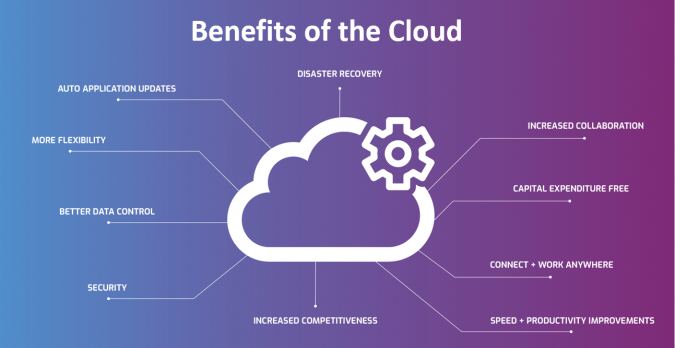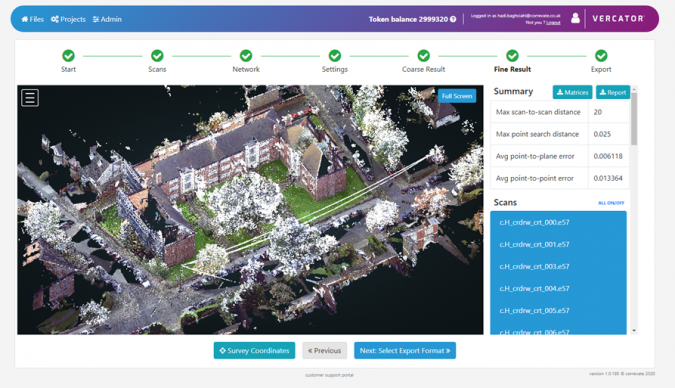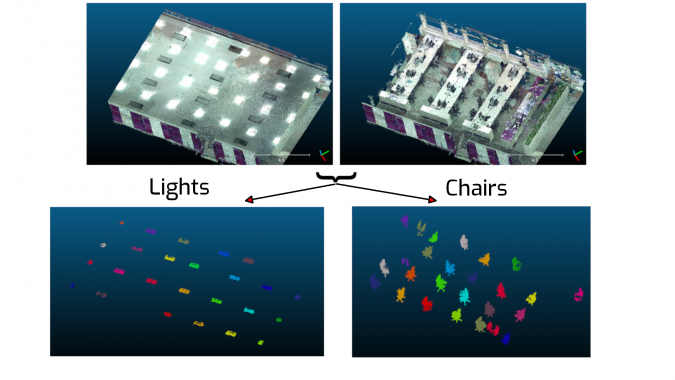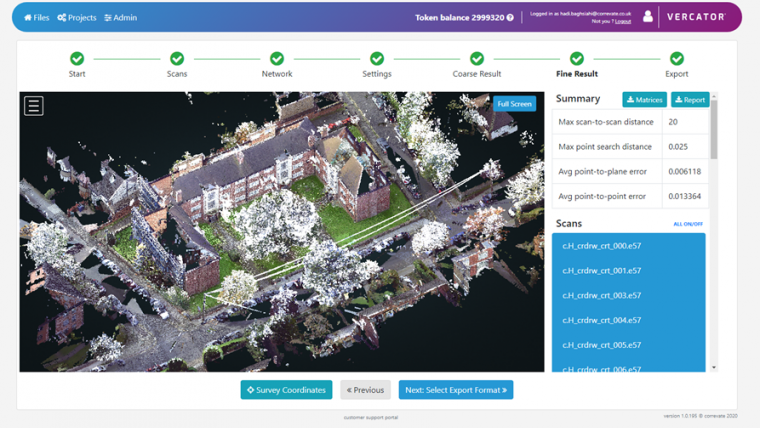What Cloud Computing Means for Lidar in Construction
Increased focus on cloud computing and point clouds in the construction sector is expected to result in new levels of speed, collaboration and real-time communication.
The construction sector is undergoing radical change. The industry is facing many challenges such as rising costs, tight project delivery and building sustainability. Above all, it must address the quality of construction and the need to constantly improve its processes. For a long time, the public clouds did not have what Lidar point cloud applications needed: high bandwidth networking, but this has been changing rapidly over the past couple of years.
Digitalization will be crucial to making progress on these fronts, with 3D surveying and point cloud technology leading the charge. 2020 will mark a turning point in terms of innovation for the construction industry. We anticipate a focus on the cloud and point clouds, where we will see the delivery of new levels of speed, collaboration and real-time communication.
Tying together the main trends such as 3D printing, portable Lidar scanning, drones and AR/VR, to name a few, cloud technology and point clouds will disrupt this sector. What was a promising innovation a few years ago is today a fully-fledged trend.
Depending on your definition, cloud computing itself has been around for nearly 20 years, with some of its central ideas going back to the mainframe era. In some senses, it can consider itself as a mature technology, being made up of systems that underpin the modern internet. That said, it was not widely adopted until recently, with more services becoming cloud-first. Being a follower in cloud technology has its advantages. By combining mature, but still innovative technologies, with network advances in fibre and 5G networking, we are already seeing more novel applications that enable transformational process changes.

Cloud Computing
So, what is the cloud? Generally, cloud computing can be considered on-demand computing resource whereby the user is not actively managing the computing but where the resources are usually shared to create economies of scale. This can encompass common computing needs such as processing capability and data storage.
There are many benefits to operating in the cloud, but how do you get started? There are different approaches you can take. Of course, you could continue to manage your IT on-premise, but this will not necessarily achieve the benefits illustrated in Figure 1.
There are three main service models for cloud adoption: IaaS, PaaS and SaaS.
IaaS, or Infrastructure as a Service, is the provision of cloud infrastructure by a vendor where the infrastructure is provided (network, hardware, security) but the operating system and apps are not. This could be a virtualized environment, where the user then has control over the creation of virtual machines, for example in Amazon AWS or Microsoft Azure. You can provide the operating system and the software for each virtual machine, but the hardware can be purchased on a pay-as-you-go basis. This can also include data storage. This is slightly less work than managing on-premise, but requires knowledge, for example of how to create virtual machines, network them together and more.
PaaS, or Platform as a Service, builds on IaaS but includes the operating system and runtime environment. So perhaps you have applications you want to run in the cloud but you don’t want the overhead of having to manage IT. Using this model, you can set up virtual servers and log into them to install your software (assuming of course you can run the software in a virtualized environment. Not all vendors support their software running in this way or provide it at additional cost).
Finally, there is SaaS, or Software as a Service. This builds on PaaS and includes applications and (in some cases) data management. For example, Office 365 from Microsoft or BIM 360 from Autodesk. With a cloud-based SaaS, you don’t need to worry about anything other than using the software and paying for the use of the software on a per usage tariff basis. Similarly, services like Dropbox, Zoom and Salesforce can be procured in this manner.
Before embarking on adopting any of these models, it is important to understand the security of your data. In the UK, the National Cyber Security Centre has guidelines on implementing the 14 cloud security principles, which provides a good starting place.
Cloud for Construction
Within a construction project – from initial design through to facilities management – there are many stakeholders in many locations – architects, construction teams, surveyors on site, government bodies, engineers and the final client. All in different places with different roles in the process. With the trend towards more collaborative ways of working, the need to have accessible information for projects, share data and monitor results points firmly towards cloud solutions.
In construction, there has been a growth in cloud services of different categories in recent years. The prominent services are in document/data management, including Trimble Connect, Procore, BIM 360 and PlanGrid – with Bentley Systems' acquisition of GroupBC further evidence of the future direction of travel. There are more specialist services as well, like 3DRepo, Onshape and us with Vercator, who are providing more specialist tools for parts of the construction workflow.
The development of cloud platforms by the major software vendors points to a future in which they operate as a series of platforms with interoperability layers between them to other third-party specialist services. It is hoped that this in part aids the digitized future of data transactions necessary for the theorized digital twin.
Cloud for Lidar Processing
Across almost every sector, digital technology is the catalyst to increase speed and efficiency. Surveying is no different. The faster laser scans can be carried out with few process steps, the faster data can be processed and shared – and the less chance of misunderstandings and costly reworks down the line.
In the construction sector, more in-field scanning will be carried out and collated in the cloud as it is generated. The use of AR/VR will also have a greater impact as these cloud-based renderings can be viewed and experienced immediately by stakeholders – who will probably be nowhere near the site.
Most mobile devices, especially with the promise of 5G speeds, can take advantage of cloud technology anywhere and anytime. The cloud can accommodate, process and store almost limitless amounts of information, which can be instantly shared.
For a long time, the public clouds did not have what point cloud applications needed: high bandwidth networking, surveyor specific SaaS applications and relatively inexpensive compute power and storage. Now, the major clouds (AWS, Azure and Google) have all the pieces in place – which is what Correvate is leveraging with the Vercator software solution so surveyors can take full advantage.

Up until recently, assembling the numerous point clouds recorded on site was a daunting prospect. The accuracy of the information resulted in large file sizes, all of which require aligning. Fortunately, machine learning and other AI techniques are becoming increasingly integrated into the scanning and registration process to make this a problem of the past. Read more about this in the recent article by Correvate CSO Dr David Selviah.
The increasing use of technologies such as these takes full advantage of cloud processing. The use of parallel programming exploits multiple threads on the cloud CPUs to reduce the time taken to process scans dramatically. This is also driving automation in the field with a set of innovative robotics start-ups (e.g. Scaled Robotics and Doxel) capturing vast amounts of data continuously to provide ongoing situational intelligence for construction sites.
To a large extent, the location of the data and its size is already starting to determine the location of the computer and applications. If there is a terabyte data set sitting in the cloud, it is more than likely that you are not going to move it.
Whether collaborating on these data sets in real-time through online meetings or through shared workspaces, the anywhere-access of innovative cloud collaboration technologies will provide the framework for stakeholders to work as one team. By using these cloud collaboration tools, stakeholders gain 24/7 global accessibility, simplified deployment and maintenance, mobility and file syncing.
Convergence
It seems clear that the next couple of years will see the convergence of cloud, data science and scanning technology. Developments in laser scanning and point cloud processing are providing the impetus for a range of innovative technologies resulting in new processes, improved output and data quality. With more and more rich data sets being produced from sensors, devices and machines, and clever software being developed to process it, the future of 3D scanning will certainly be digital, automated and cloud-based.


Value staying current with geomatics?
Stay on the map with our expertly curated newsletters.
We provide educational insights, industry updates, and inspiring stories to help you learn, grow, and reach your full potential in your field. Don't miss out - subscribe today and ensure you're always informed, educated, and inspired.
Choose your newsletter(s)
























